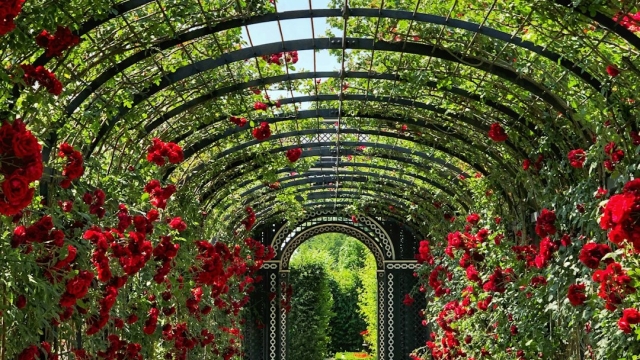
Unlock Your Green Thumb: Essential Gardening Tips for Flourishing Plants
Gardening is a rewarding and fulfilling hobby that connects us to nature while allowing us to express our creativity. Whether you are a seasoned expert or a complete novice, the joy of cultivating plants and watching them thrive can bring a sense of accomplishment and peace. With the right gardening tips, anyone can transform their outdoor space into a lush oasis or create a beautiful indoor garden.
In this guide, we will explore essential gardening tips to help you unlock your green thumb. From understanding the needs of your plants to effective soil management and watering techniques, these insights will empower you to nurture your plants and bring them to their fullest potential. Discover the simple yet powerful strategies that will lead to flourishing plants and a vibrant garden that you can be proud of.
Choosing the Right Plants
Selecting the right plants for your garden is crucial for ensuring a thriving and productive space. Start by assessing your garden’s climate and soil type. Different plants have varying needs for sunlight, water, and nutrients. Take the time to understand the local climate zones, as some plants thrive in warmer conditions while others prefer cooler temperatures. This knowledge will guide you in making informed choices that align with your garden’s environment.
Next, consider the specific conditions of your garden area. Evaluate sun exposure throughout the day, the drainage capacity of your soil, and any existing flora. Plants like succulents and cacti do well in dry, well-drained soil, while others such as ferns and hostas prefer moister, shaded areas. Additionally, be mindful of the space you have available. Crowded gardens can lead to competition for resources and increased susceptibility to pests and diseases.
Finally, think about your gardening goals and preferences. Decide whether you want a colorful flower garden, a vegetable patch, or a combination of both. Choose plants that not only suit your climate and space but also bring you joy. Native plants are often a great choice, as they typically require less maintenance and support local wildlife. By thoughtfully selecting the right plants, you’ll set the foundation for a flourishing garden.
Soil Preparation Basics
The foundation of any successful garden starts with the soil. Proper soil preparation can greatly impact the health and growth of your plants. Begin by assessing your current soil type, whether it’s sandy, clay, or loamy. Each type has its own characteristics affecting drainage, nutrient retention, and root penetration. Understanding your soil will help you make informed decisions about amendments needed to create the ideal growing environment.
Next, clear your planting area of any debris, weeds, and old plant material. This helps to prevent competition for nutrients and reduces the risk of pests and diseases. Once cleared, it’s important to till or turn the soil to a depth of about twelve inches. This process aerates the soil, allowing oxygen to reach the roots. Incorporating organic matter such as compost will enhance soil structure, increase fertility, and improve moisture retention.
Finally, test your soil pH and nutrient levels to ensure they meet the requirements for your desired plants. You can use a home testing kit or send samples to a local extension service for analysis. Based on the results, you may need to adjust the pH with amendments like lime or sulfur, or add specific fertilizers to boost nutrient levels. A well-prepared soil sets the stage for flourishing plants and a thriving garden.
Watering Wisely
One of the most crucial aspects of gardening is understanding how to water your plants effectively. Overwatering can lead to root rot and attract pests, while underwatering can cause stress and hinder growth. To find the right balance, assess the needs of your plants based on their type, age, and the environmental conditions. Generally, it’s best to water deeply but infrequently, allowing the soil to dry out slightly between watering sessions. This encourages roots to grow deeper in search of moisture.
Timing is also an essential factor in effective watering. The early morning is often the best time to water your garden. During this time, temperatures are cooler, and winds are calmer, which reduces evaporation and allows water to reach the roots more efficiently. Avoid watering in the evening, as this can leave moisture on the leaves overnight, promoting fungal diseases. Observing weather conditions is important too; if rain is forecasted, adjust your watering schedule accordingly to conserve water and prevent over-saturation.
Using the right tools can make watering easier and more effective. A soaker hose or drip irrigation system can deliver water directly to the soil, minimizing waste and improving plant health. Additionally, consider the type of soil in your garden; sandy soils drain quickly and may need more frequent watering, while clay soils retain moisture longer. Regularly checking the moisture level in the soil will help you determine when it’s time to water, ensuring your plants receive just the right amount.
Fertilization Fundamentals
Electroculture gardening
Fertilization is a crucial aspect of successful gardening, as it provides the essential nutrients plants need to grow strong and healthy. The primary nutrients required are nitrogen, phosphorus, and potassium, often referred to as NPK. In addition to these, plants also benefit from secondary nutrients like calcium, magnesium, and sulfur, as well as trace minerals such as iron and zinc. To determine the right type and amount of fertilizer, it is beneficial to conduct a soil test, which will reveal nutrient deficiencies and pH levels, guiding you toward the best fertilization strategy.
There are two main types of fertilizers: organic and synthetic. Organic fertilizers, such as compost, well-rotted manure, and bone meal, release nutrients slowly and improve soil structure, fostering a healthy ecosystem of beneficial microorganisms. On the other hand, synthetic fertilizers provide a quick nutrient boost and are often easier to apply, but they can lead to nutrient runoff and soil degradation if overused. A balanced approach, considering both types, can enhance plant growth while maintaining soil health.
When applying fertilizer, timing and technique are crucial. It is generally best to fertilize during the growing season when plants are actively assimilating nutrients. Applying too early or too late can hinder growth or even burn the roots. Additionally, using the appropriate application method—be it broadcasting, side-dressing, or liquid feeding—can make a significant difference in how effectively plants absorb nutrients. A careful fertilization plan tailored to your specific plants and garden conditions will lead to thriving greenery and bountiful blooms.
Pest Management Strategies
Effective pest management is crucial for maintaining healthy plants and a flourishing garden. One of the most effective strategies is to promote biodiversity by planting a variety of species. This not only attracts beneficial insects like ladybugs and lacewings, which prey on harmful pests, but also creates a balanced ecosystem that can help keep pest populations in check. Rotation of crops each season can also prevent pests from becoming established, since many pests are specific to certain plants.
Another strategy involves using natural pest deterrents, such as neem oil or insecticidal soap, which can be less harmful to beneficial insects and the environment compared to chemical pesticides. Regular monitoring of plants for early signs of pest infestations allows for timely intervention. Handpicking larger pests, such as caterpillars or slugs, can be an effective way to reduce their numbers without resorting to chemicals.
Additionally, consider implementing barriers and traps as part of your management plan. Floating row covers can protect seedlings from insect invasions while still allowing sunlight and rain to reach the plants. Sticky traps can catch flying pests, reducing their populations and minimizing damage. By integrating these diverse strategies, gardeners can create a sustainable and effective pest management system that supports the overall health of their garden.




